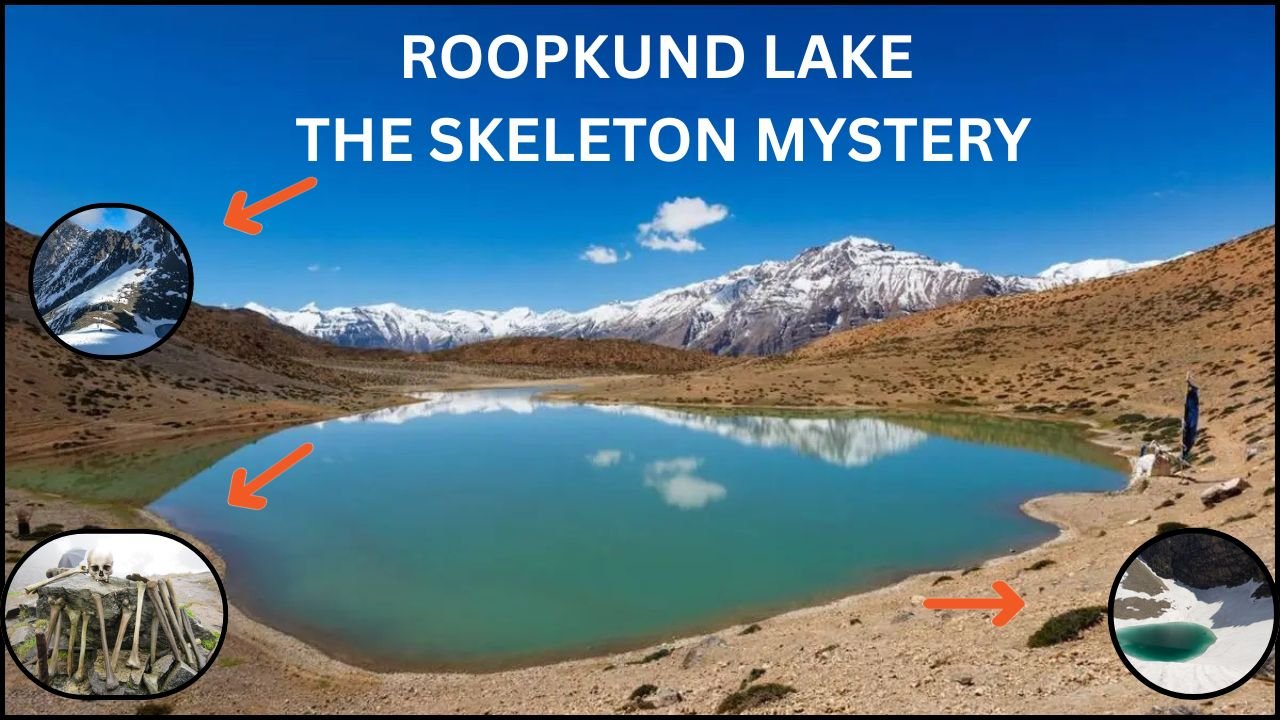Blog
Roopkund Lake, Uttarakhand: The Enigmatic Skeleton Lake of the Himalayas

High in the Garhwal Himalayas of Uttarakhand, Roopkund Lake rests at an astonishing altitude of 5,029 meters (16,499 feet). Its nickname, “Skeleton Lake,” stems from the hundreds of human skeletons discovered at the lake’s frozen bottom. This chilling discovery has intrigued historians, archaeologists, and adventurers for decades.
A Mysterious Discovery
The skeletons were first discovered by a British Forest Guard in 1942, though local folklore had long whispered tales of travelers mysteriously disappearing in the region. Scientific studies have dated these remains back to the 9th century, and research suggests that a sudden hailstorm might have been responsible for the mass deaths. The icy environment preserved the skeletons almost perfectly, leaving a haunting glimpse of a tragedy frozen in time.
Unraveling the Mystery
Who were these people, and why were they at such a remote lake? DNA studies reveal that the group included men and women from diverse regions, possibly pilgrims traveling to a Himalayan shrine or a royal entourage. Some scholars suggest that extreme weather, treacherous terrain, and altitude sickness could have combined to create a deadly event. Despite modern analysis, the lake continues to inspire speculation and fascination worldwide.
Trekking to Roopkund
Roopkund Lake is now a popular trekking destination. The journey typically begins from Wan village and covers around 53 km round trip, traversing dense forests, lush meadows, and rugged glacial terrain. Trekking enthusiasts experience not only adventure but also the ethereal beauty of the snow-capped peaks surrounding the lake. The best time to trek is May to October, when the trails are relatively accessible and the snow is manageable. Permits from the forest department are mandatory.
Flora and Fauna
The region around Roopkund is a biodiversity hotspot. Trekking paths pass through areas adorned with rhododendrons, junipers, and alpine flowers, and the wildlife includes snow leopards, Himalayan black bears, and blue sheep. The combination of natural beauty, wildlife, and historical intrigue makes the trek a unique experience for nature lovers and adventure seekers alike.
Cultural Significance
Locals believe that Roopkund Lake is spiritually significant. Ancient pilgrimage routes to the Nanda Devi shrine pass through this area, and folklore links the skeletons to divine punishment or unfortunate fate. Visiting the lake is not just an adventure; it is also a journey into Himalayan culture and mythology.
Conclusion
Roopkund Lake is more than a trekking destination. It is a window into history, culture, and the extremes of human endurance. With its breathtaking scenery, rare wildlife, and centuries-old mystery, the lake continues to capture the imagination of travelers, researchers, and thrill-seekers alike.
